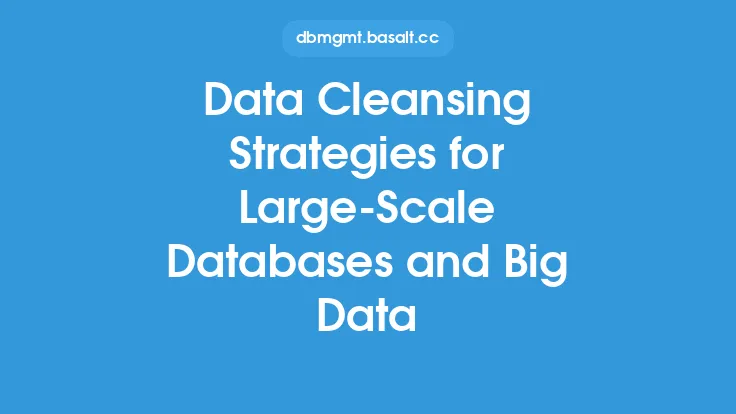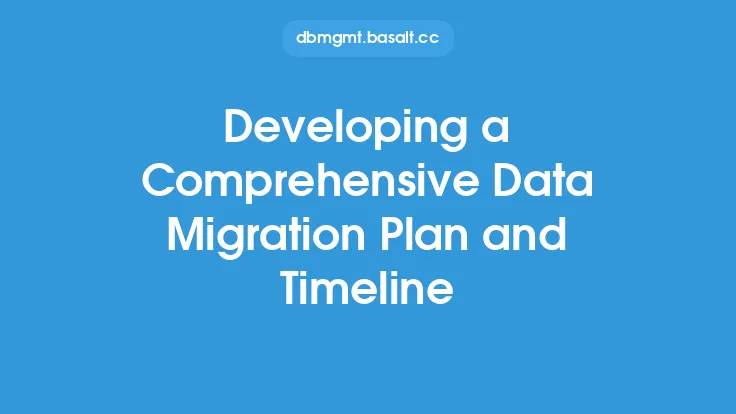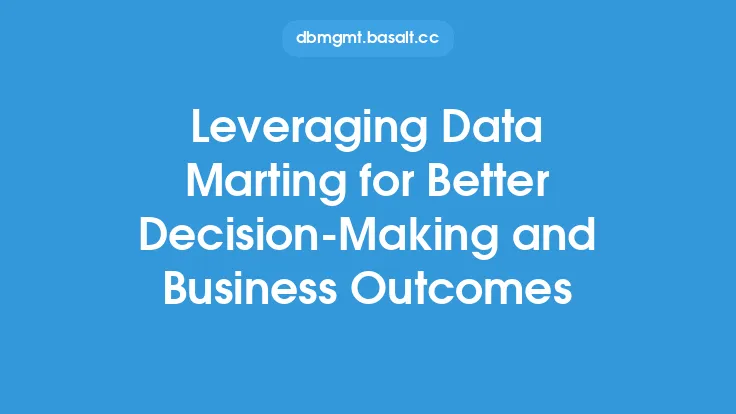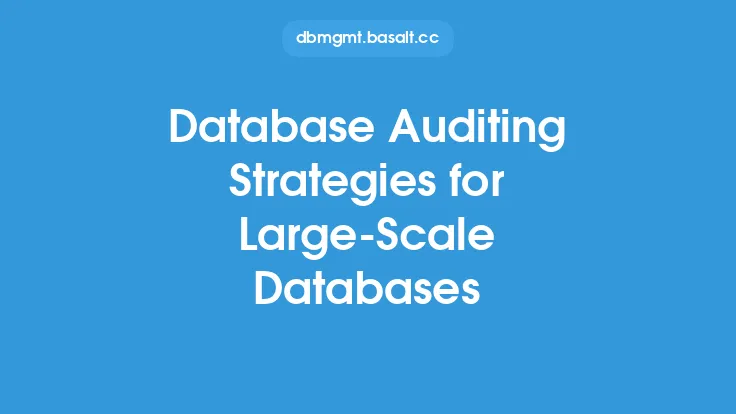When it comes to planning and executing a large-scale data migration, there are several key factors to consider. Data migration is the process of transferring data from one system, format, or storage device to another, and it can be a complex and time-consuming task. Large-scale data migrations, in particular, require careful planning and execution to ensure that the data is transferred accurately, efficiently, and with minimal disruption to business operations.
Introduction to Data Migration
Data migration is a critical process that involves the transfer of data from one system to another, and it is often necessary when organizations upgrade or replace their existing systems, merge with other companies, or adopt new technologies. The goal of data migration is to ensure that the data is transferred accurately, completely, and with minimal disruption to business operations. Large-scale data migrations can be particularly challenging, as they often involve large volumes of data, complex data relationships, and multiple stakeholders.
Pre-Migration Planning
Before starting a large-scale data migration, it is essential to conduct thorough pre-migration planning. This involves identifying the scope of the migration, assessing the data quality and integrity, and determining the migration approach. The scope of the migration should include the types of data to be migrated, the systems involved, and the timelines for completion. Data quality and integrity assessment involves evaluating the accuracy, completeness, and consistency of the data, as well as identifying any data errors or inconsistencies. The migration approach should be determined based on the complexity of the migration, the volume of data, and the available resources.
Data Assessment and Profiling
Data assessment and profiling are critical steps in the pre-migration planning phase. Data assessment involves evaluating the data quality, integrity, and consistency, while data profiling involves analyzing the data to identify patterns, relationships, and trends. Data profiling can help identify data errors, inconsistencies, and anomalies, which can be addressed before the migration. Data assessment and profiling can be performed using various tools and techniques, including data quality software, data profiling tools, and statistical analysis.
Migration Approach and Strategy
The migration approach and strategy should be determined based on the complexity of the migration, the volume of data, and the available resources. There are several migration approaches, including the big bang approach, the phased approach, and the incremental approach. The big bang approach involves migrating all the data at once, while the phased approach involves migrating the data in stages. The incremental approach involves migrating small amounts of data at a time, with each increment building on the previous one. The migration strategy should also include the development of a detailed project plan, the identification of resources and timelines, and the establishment of a migration team.
Data Transformation and Mapping
Data transformation and mapping are critical steps in the migration process. Data transformation involves converting the data from the source format to the target format, while data mapping involves creating a map of the data relationships between the source and target systems. Data transformation can be performed using various tools and techniques, including data transformation software, scripting languages, and data mapping tools. Data mapping can be performed using data mapping tools, data modeling tools, and data governance tools.
Migration Execution and Monitoring
The migration execution and monitoring phase involves the actual transfer of the data from the source system to the target system. This phase should be carefully planned and executed to ensure that the data is transferred accurately, efficiently, and with minimal disruption to business operations. The migration execution should be monitored in real-time to identify any issues or errors, and corrective actions should be taken promptly to address any problems. The migration monitoring should include the tracking of data transfer rates, data quality, and system performance.
Post-Migration Validation and Testing
The post-migration validation and testing phase involves verifying that the data has been migrated accurately and completely. This phase should include the validation of data quality, data integrity, and data consistency, as well as the testing of system functionality and performance. The validation and testing should be performed using various tools and techniques, including data quality software, data testing tools, and system testing tools. The post-migration validation and testing phase is critical to ensuring that the data migration has been successful and that the target system is functioning as expected.
Conclusion
In conclusion, planning and executing a large-scale data migration requires careful planning, execution, and monitoring. The pre-migration planning phase involves identifying the scope of the migration, assessing the data quality and integrity, and determining the migration approach. The migration execution and monitoring phase involves the actual transfer of the data, while the post-migration validation and testing phase involves verifying that the data has been migrated accurately and completely. By following these steps and using the right tools and techniques, organizations can ensure a successful data migration that meets their business needs and minimizes disruption to operations.





